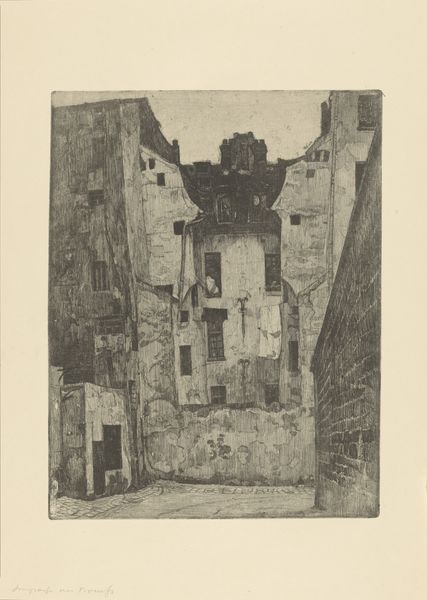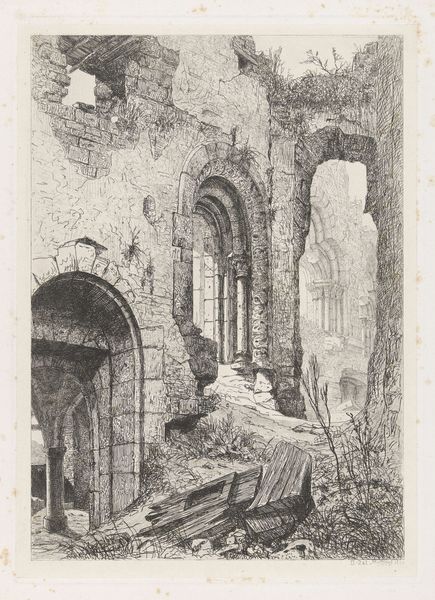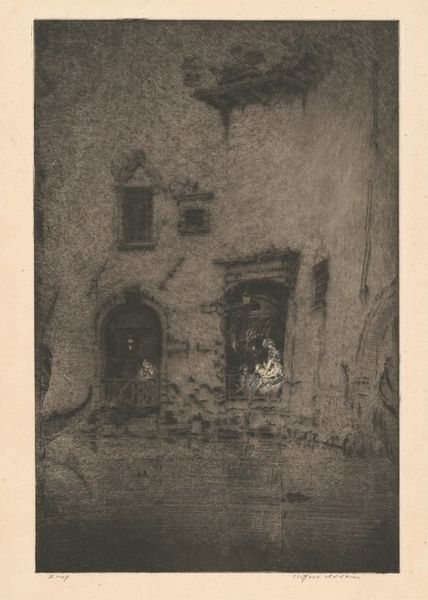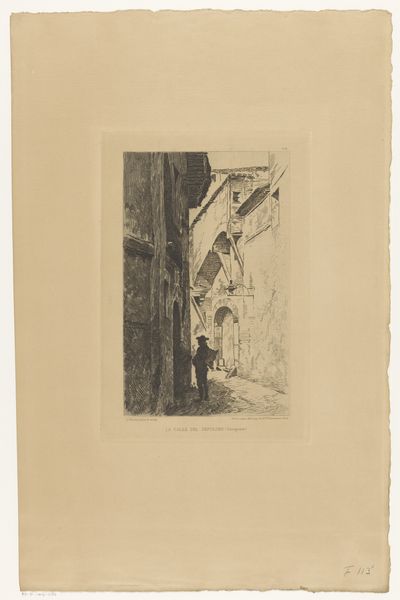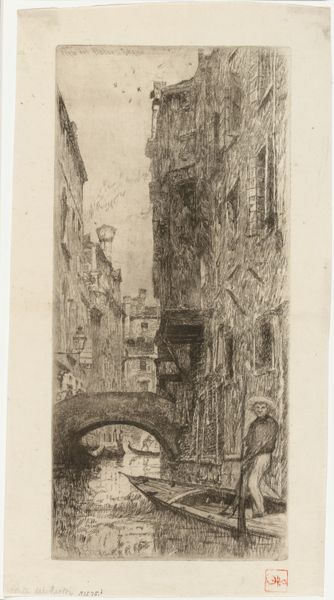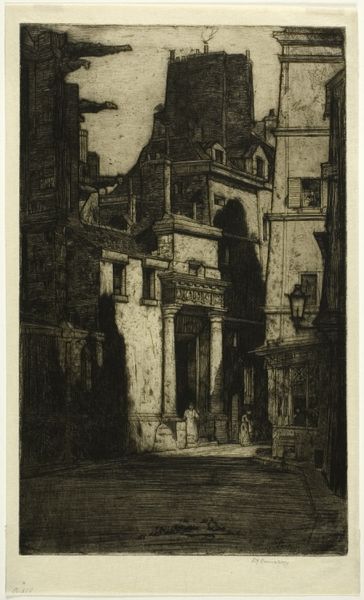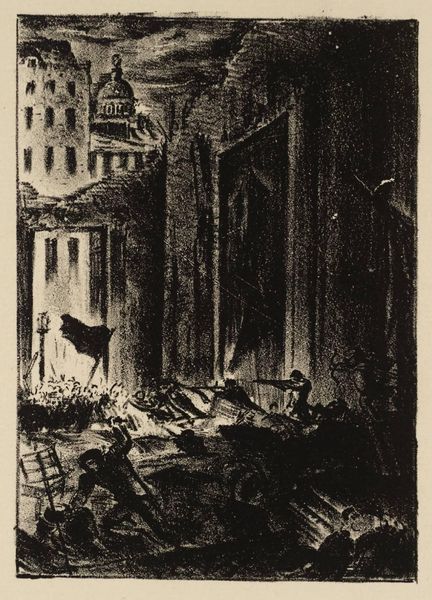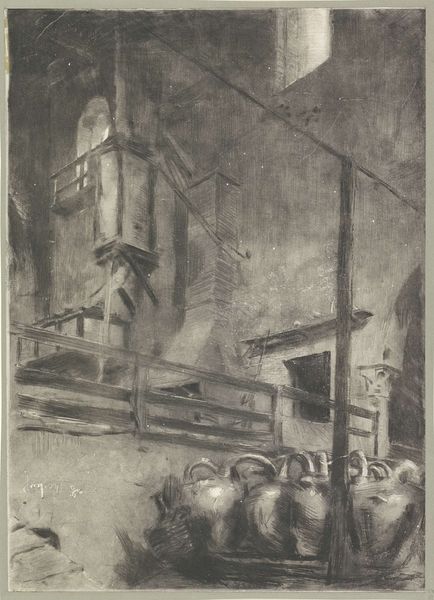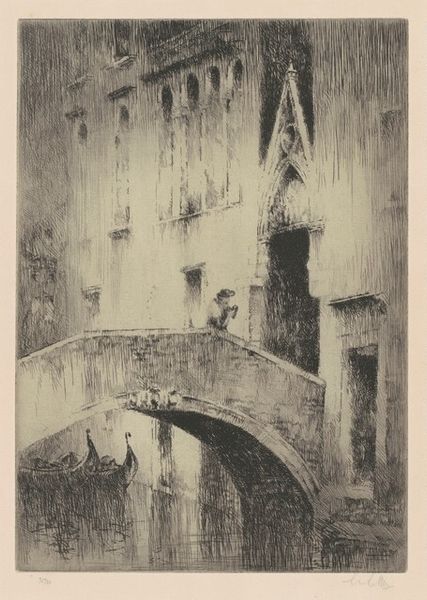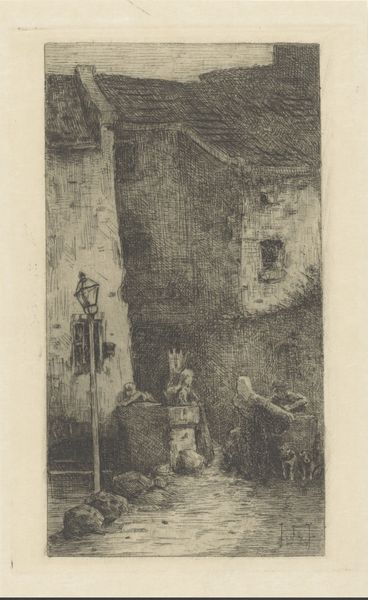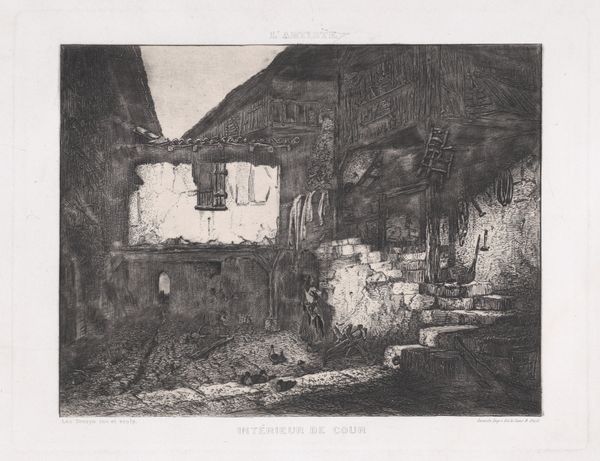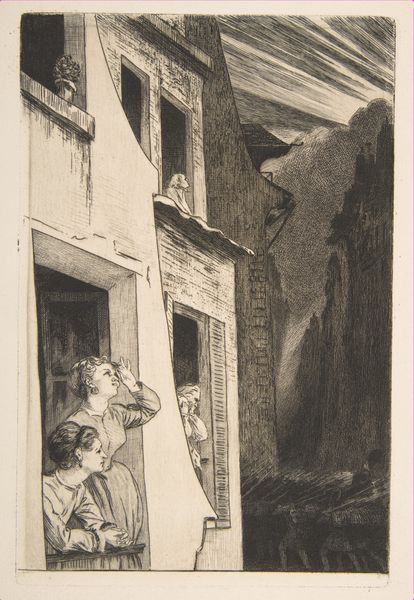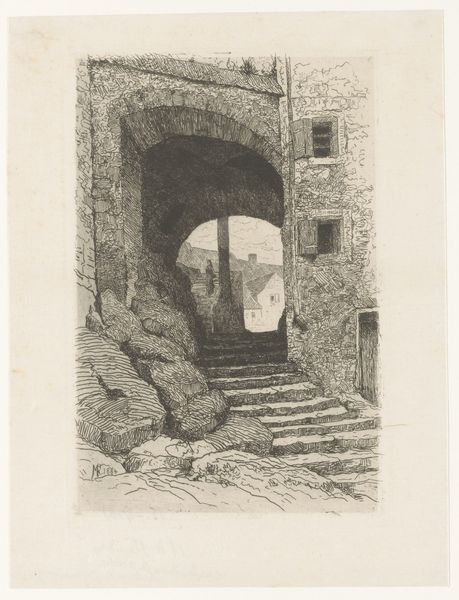
drawing, print, etching
#
drawing
# print
#
impressionism
#
etching
#
19th century
#
cityscape
Dimensions: sheet: 46 × 34.7 cm (18 1/8 × 13 11/16 in.) plate: 37 × 23.7 cm (14 9/16 × 9 5/16 in.)
Copyright: National Gallery of Art: CC0 1.0
Editor: Here we have Telemaco Signorini's "Santa Maria della Tromba" from 1886, rendered in etching. It strikes me how Signorini uses the etching technique to depict the daily life within this somewhat claustrophobic cityscape. What can you tell me about the meaning in this piece? Curator: Signorini's choice of etching is incredibly relevant. The labor-intensive process mirrors the arduous existence of the working class depicted. Look at how the etched lines create a sense of texture and grit, evoking the materiality of the urban environment itself. Does it give you the sense that this reflects an interest in capturing the lived experience? Editor: I see what you mean. The visible effort translates into a raw, authentic feel. Is that why he focused on everyday scenes and working people? Curator: Precisely! He’s subverting the traditional academic focus on the wealthy. By choosing a mundane subject and elevating it through skilled craftsmanship, Signorini blurs the lines between high art and the "craft" of printmaking. How might his choice challenge the viewer's assumptions? Editor: I guess it asks us to reconsider what's worthy of artistic representation, valuing the process and lived experience as much as the subject itself. It kind of makes you wonder about the people actually doing all the labor shown in the marketplace scene depicted at the base. Curator: Indeed! He prompts us to examine not just *what* is depicted, but *how* it is made, and the social implications of both. This connects to larger issues about labor and consumption in industrialized society, that he witnessed every day on the streets. Editor: So, it's not just a pretty picture of Italy, it's a commentary on society! It makes you rethink about art-making. Curator: Absolutely. By centering on material and production, Signorini opens up new avenues for understanding both art and society.
Comments
No comments
Be the first to comment and join the conversation on the ultimate creative platform.
